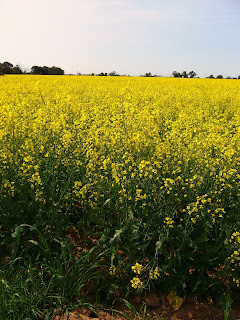Somewhere between the town of Benalla to Cobram we came across a sea of yellow flowers. It immediately caught our attention. It felt like a place in heaven, a peaceful place to be, so much so that we just had to stop to take some photos of it. It was an awesome view of a canola covered field.
We later saw many of these canola farms on both side of the Murray River, all the way to Yarrawonga, east of Cobram.
These vivid yellow flowers, flower in late August which is spring time here at Down Under. Canola is a winter crop. It is grown for its seed which is crushed for the oil used in margarine, cooking oils, salad oils and edible oil blends. That means you can actually eat it, if eat is the right choice of word.
It is one of the plants used in crop rotations and because it is a profitable crop in its own right, it has become a major industry in the region. Canola as part of the crop rotation choices allows farmers to better manage their weeds. Because canola is a broadleaf crop, and because there are different herbicide tolerant varieties of canola, farmers have more options for weed control than in cereal crops such as wheat and barley.
According to the Department of Primary Industries, canola production in Australia averaged 1.24 million tonnes per year between 2002 and 2008. Victoria produces an average of 248,000 tonnes from 198,000 ha.
The main production area is south west Victoria but the crop is important across the grain belt. The rank order of production by States is Western Australia, NSW, Victoria and South Australia.
Important markets for Australian canola are Japan, China, Pakistan and Bangladesh.







No comments:
Post a Comment